In conversation with...
Filip and Anja from dairy farm De Brabander LV
Filip (49) and Anja (47) De Brabander-Vandierendonck have enjoyed running a dairy farm with 260 dairy cows together in the municipality of Zomergem (Lievegem) Belgium for the past 27 years. The dairy cows are housed in a cow cubicle shed with rubber mats and milked in a 40-stand Boumatic outdoor milking machine. The milk is then transported to Friesland Campina in Aalter. The calves make use of CalfOTel housing. “Rearing a newborn calf to become a healthy, highly productive dairy cow is our main goal – and good housing plays a part in this.”
Every day, Filip and Anja begin milking the cows at 6 a.m. After milking, Filip cleans the carousel and Anja feeds the calves. The calves are given 2 to 3 litres of milk on the basis of 180 grams of milk powder per litre twice a day. The milk is administered using a milk taxi. Anja explains: “From day 2 to day 10, the amount of milk given is slowly increased from 2 to 3 litres each feed. From day 65 to day 80, we reduce the amount of milk administered again slowly down to 0. In addition to the milk, the calves receive unlimited feed concentrate and hay.” As soon as the carousel is clean, Filip feeds the dairy cows, the young stock and the dry cows. He also observes and handles the cows requiring attention which have been selected by the HerdMetrix program. Anja does the administration, gives the calves feed concentrate, hay and fresh water and cleans out the hutches. In the evenings, most of the work has to be repeated again.
What do you believe is important when rearing calves?
“We attach a great deal of important to hygiene, as only then can you keep the calves healthy. But a good colostrum supply always comes first. That means that we give a calf 4 litres of colostrum as soon as it is born, and then another 4 litres in the next 24 hours”, explains Anja. “A calf with no appetite is given the colostrum using the probe. Whatever else happens, that first 4 litres of colostrum must be administered in the first four hours – that’s vital. What’s more, we always check whether all the calves are drinking their milk smoothly. If they’re not, we help them with this and check what the matter is. If a calf has diarrhoea, for example, we administer electrolytes and the necessary medication right away, until the diarrhoea has passed. Early intervention can prevent many problems.”
What do you do to prevent health problems in the calves?
“We vaccinate all cows six weeks before calving with the Rotavec Corona vaccine. We used to vaccinate them against influenza too, but we no longer do that now. By ensuring that housing is good-quality and clean, it is possible to prevent many problems. We like the CalfOTel igloos a lot. Compared to previous housing, they last much longer and the climate in the hutches is much better. I think that this is due to the larger openings, making the air flow calmer and ensuring a fresh climate in the hutches at all times”, explains Filip. The calf hutches are always cleaned thoroughly after use using a high-pressure cleaner before being disinfected. “The advantage of the CalfOTel is its smooth surface and the round edges, making them very easy to clean and disinfect.”
Why do you opt for outdoor housing?
Anja explains: “We only house our heifer calves outside. The bull calves are housed separately within the shed. However, I am convinced that housing the animals outdoors in Igloos has its benefits. The climate is better, there are fewer germs and the housing is much better to clean.” The heifer calves remain in the igloos for a month. They then go in small groups in the CalfOTel XL 5 with fencing and are fed using a CalfOTel CombiFeeder XL. “We currently have four of these group hutches in use. This works brilliantly. Another reason for opting for CalfOTel products again is that they are very well made. Our first igloos are already over 20 years old and they still work fantastically.”
How did things go during the warm summer months?
“Brilliantly. In the CalfOTel hutches, our calves were barely bothered by the high temperatures. However, that was not the case with the plastic hutches we previously had. It was very warm inside our old plastic hutches and the smaller openings meant that there was much less ventilation, thereby increasing the likelihood of the animals catching the flu or developing respiratory problems”, explains Anja. “Another benefit of the CalfOTel hutches is the self-closing feeding fence. It makes it easy to secure the animals if I want to handle them.” Once the calves have been housed outdoors for three months, they are moved indoors.
What do you believe is characteristic of CalfOTel?
Filip: “To summarise in a few words: very good quality, long life, easy to clean and much less labour intensive. Thanks to their long life and the added value these products have for our calf rearing, they are certainly worth the investment. Only with good-quality housing can you turn a newborn calf into a highly productive dairy cow. I am certain of that.” Anja adds: “As the person caring for the calves, it makes me happy when our calves feel good and are happy. That’s something that I take great pleasure from. I can also be sure that they are growing properly and are healthy.”
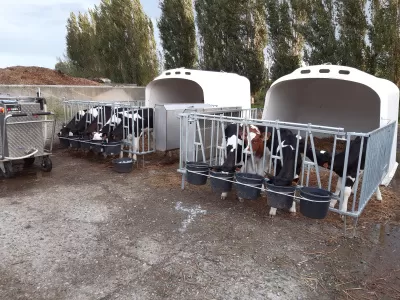
Share this message
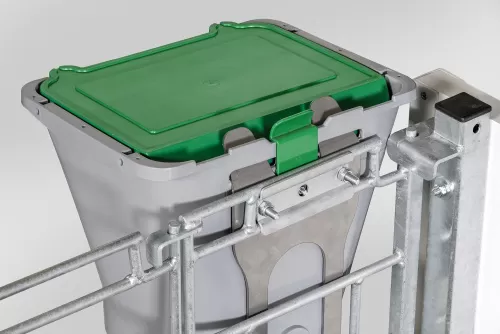
Special offer! CalfOTel Milkfeeder
CalfOTel closes the year 2020 with a special offer! Until the end of the month December you receive a discount on the new CalfOTel Milkfeeder.

CalfOTel Open Top Premium wins Innov’SPACE!
CalfOTel has won a 2020 Innov’SPACE for the Open Top Premium Single and Duo! Our colleague Jean Bernard Béranger received the award yesterday....
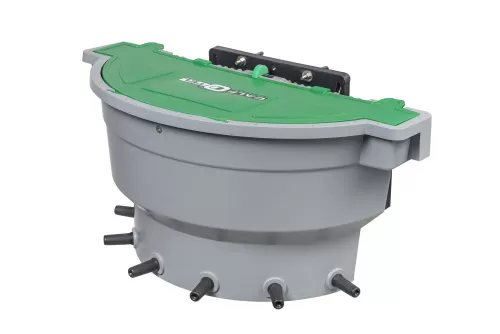
New products!
CalfOTel launches not one but three new products, among which a new line for indoor accomodation. These calf pens are suitable for dairy farmers who want to keep calves indoors or under a roof. The products were developed on the basis of...
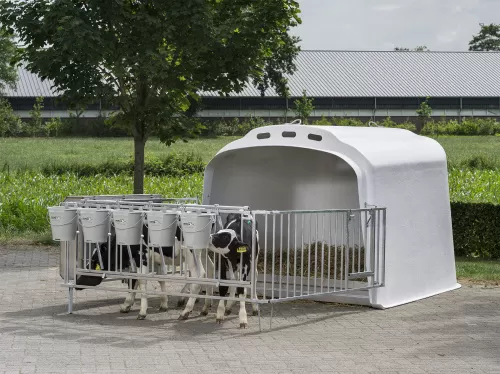
More growth and health in outdoor housing
Thorough calf rearing is essential for good performance as a dairy cow. With a high feeding regime and an all-in, all-out housing in small, fixed groups, calves perform best. For example, research by Dairy Campus/WUR with 224 breeding calves in...
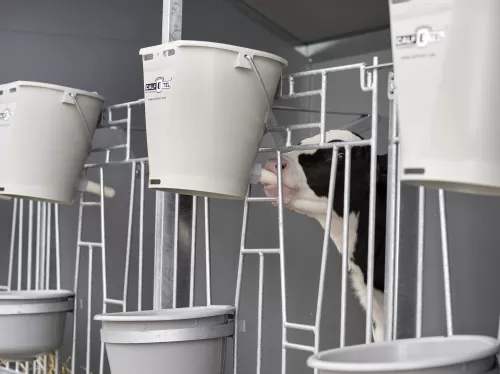
Hand-feeding better for calf’s health
Hand-feeding a calf is labour-intensive. You have to mix water and milk powder, lift buckets and then fill the teat buckets several times a day. An automatic milk feeder can save you a lot of work. However, this study has shown that calves that...
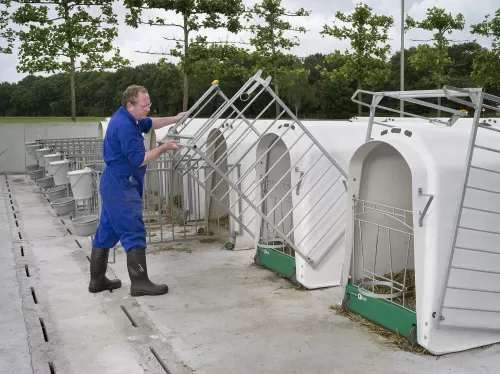
The CalfOTel systems save labour
The calf-rearing period, between 0 and 4 months, demands more labour than any other time. You can save approximately 20% on this labour by using solid hutches with the right set-up and accessories. During the development of our calf housing, we...
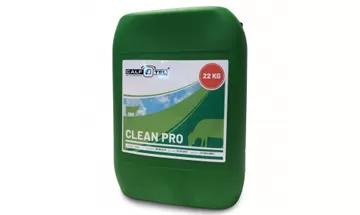
Cleaning calf hutches an easy job with CleanPro foaming product
A calf is continuously surrounded by micro-organisms. Only a few of those are true ‘pathogen’ and can, therefore, cause diseases. In order to keep these pathogens away, we aim for the highest possible level of hygiene. ...
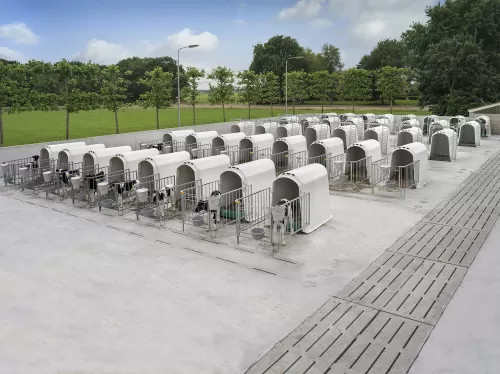
1,000 grams of growth with correct nutrition and housing
Calves that are fed and housed well can grow by as much as 1,000 grams per day during the milk period. It is not just the cattle farmer’s awareness and efforts that play a major role, so do the right housing and approach.
